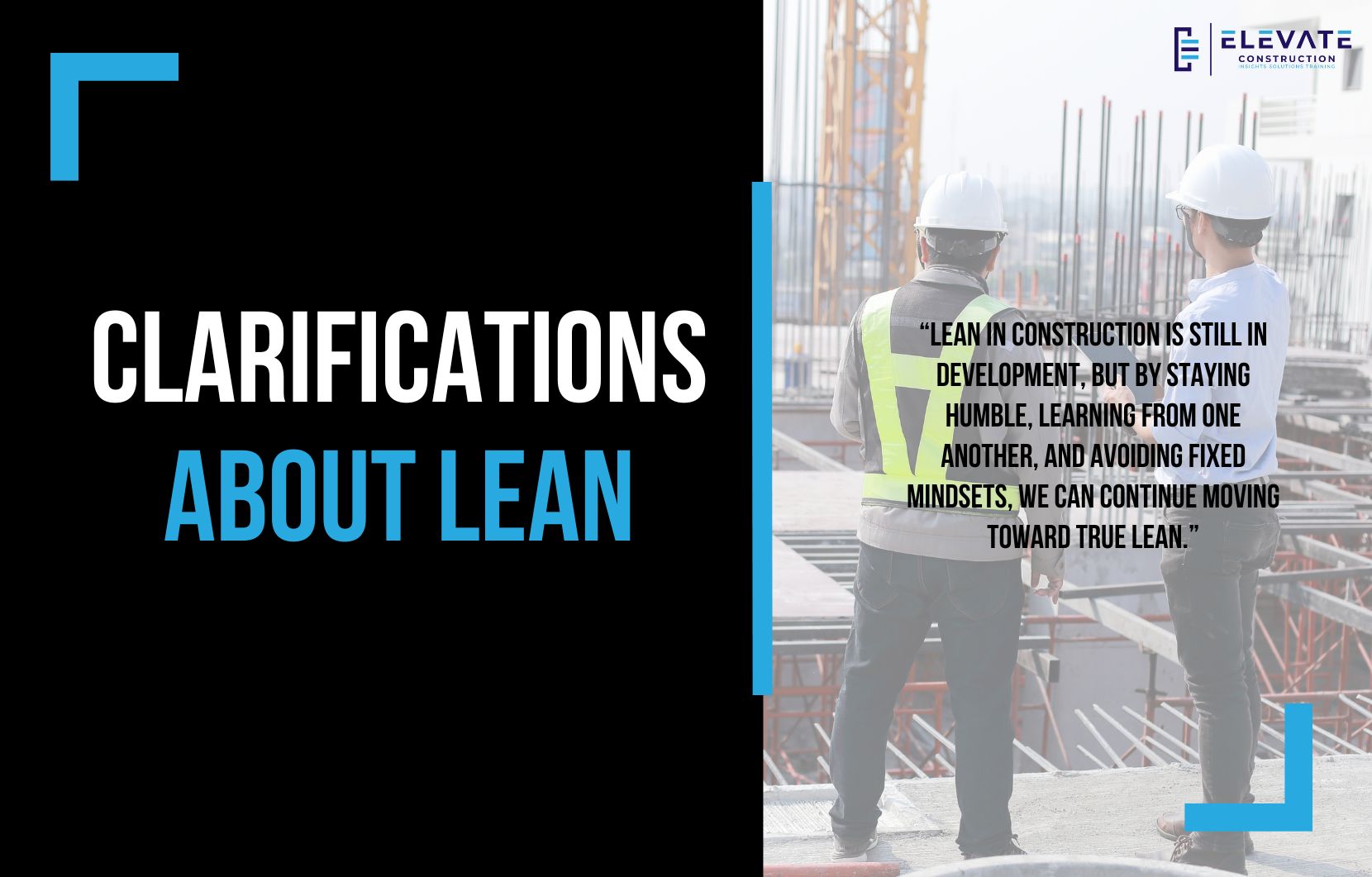Today, I want to make some clarifications about Lean that I think you’ll find valuable.
I recently received some wonderful feedback from a listener who leads a construction team within a top architectural firm that builds high-end homes and residential projects. He shared how the blog has been a source of inspiration and asked for resources on lift drawings that field engineers should be doing. Over time, we’ve developed detailed checklists for lift drawings, so if you are reading this and need those, please reach out again. I would be happy to share them.
That feedback reminded me of something bigger. Recently someone asked if there are companies truly doing Lean in construction today. When I really thought about it, the answer is no, not in the pure sense. I don’t know of a company that matches what Toyota did in manufacturing or what Paul Akers built in his organization. I don’t even think my own company is fully there yet. We are still developing, learning, and striving.
So, what does it take to master Lean in construction?
First, we need to get rid of our egos. Most of the time we don’t know if we are talking to someone’s true self or their ego, and that can distort the conversation. Second, we must never stop learning. Too many Lean consultants get fixed in what they know, which is just another form of classical management disguised as Lean.
Third, we need to network with the whole. Lean will only take root if experts and practitioners come together to learn from one another. We must be willing to improve, fail, go against the grain, and constantly question what we know. That is how real progress happens.
A few examples stand out. I learn a lot from Paul Akers, from the book How Big Things Get Done, from Built to Fail, and from the Lean Builder community. These connections spread knowledge and build momentum. Fighting among practitioners wastes time.
At the same time, we need to acknowledge misconceptions. One common one is around takt planning. Some argue for a single takt time plan where everything fits into a rigid rhythm. But in construction, reality is different. Most projects involve multiple trains of trades working at different paces. A multi-train takt plan reflects the real production system and still delivers the benefits of rhythm, flow, and optimization.
Another misconception comes from manufacturing thinking. Some people argue the flow unit must always be the value receiving unit. In construction, it is the trades that flow. They are the flow unit. Without trades, nothing moves forward. A narrow view of flow units ignores the multidimensional nature of construction and the need for both resource efficiency and work efficiency.
These misconceptions are not harmless. They keep us stuck in old ways of thinking and prevent us from mapping the production system correctly. For example, advanced work packaging sounds promising, but when it is tied to CPM scheduling, it cancels out the benefits of flow. Just because an idea comes from a well-known author or a popular book does not make it flawless. We must keep testing and questioning everything.
For me personally, Kate challenges my thinking constantly. Every book, every idea, every framework, we dissect it. At times it feels overwhelming, but it keeps me from getting stuck. And that is the point: none of us have it all figured out. Lean is not finished. We are still in research and development, and the moment we stop learning, we lose momentum.
As I layer together lessons from flow units, the Toyota Way, the Lean Builder, and other frameworks, I see the Integrated Production Control System bringing together the Last Planner System, takt production, and control as the most complete model available today. It is not perfect yet, but it is closer to mapping the reality of construction than anything else I have seen.
Lean in construction is not complete, and no company has mastered it fully. But by staying humble, learning from each other, and refusing to get fixed in our thinking, we can keep moving closer to what Lean is meant to be.
Key Takeaway
Lean in construction is still in development, but by staying humble, learning from one another, and avoiding fixed mindsets, we can continue moving toward true Lean.
If you want to learn more we have:
-Takt Virtual Training: (Click here)
-Check out our YouTube channel for more info: (Click here)
-Listen to the Elevate Construction podcast: (Click here)
-Check out our training programs and certifications: (Click here)
-The Takt Book: (Click here)
Discover Jason’s Expertise:
Meet Jason Schroeder, the driving force behind Elevate Construction IST. As the company’s owner and principal consultant, he’s dedicated to taking construction to new heights. With a wealth of industry experience, he’s crafted the Field Engineer Boot Camp and Superintendent Boot Camp – intensive training programs engineered to cultivate top-tier leaders capable of steering their teams towards success. Jason’s vision? To expand his training initiatives across the nation, empowering construction firms to soar to unprecedented levels of excellence.
On we go

